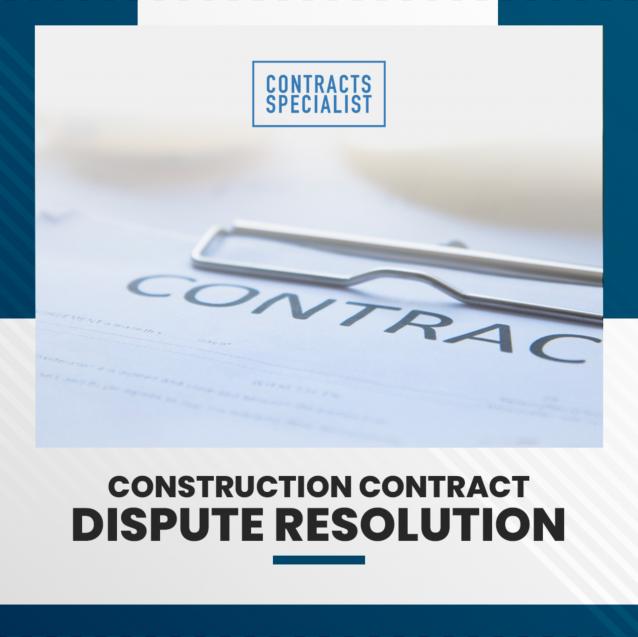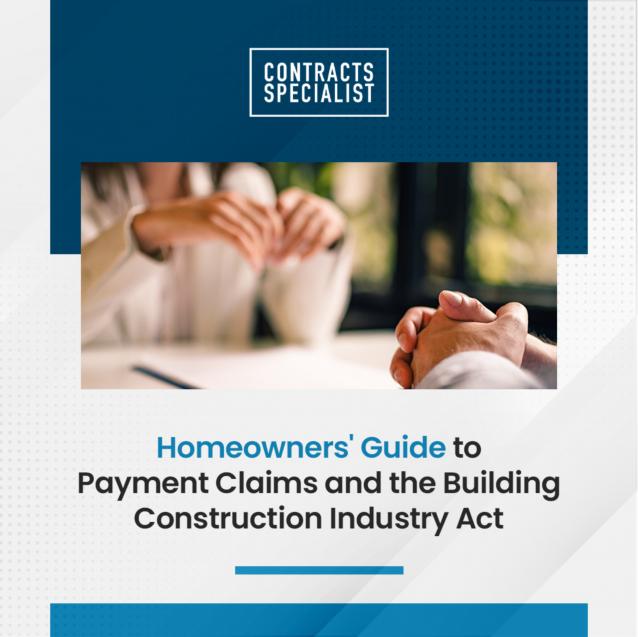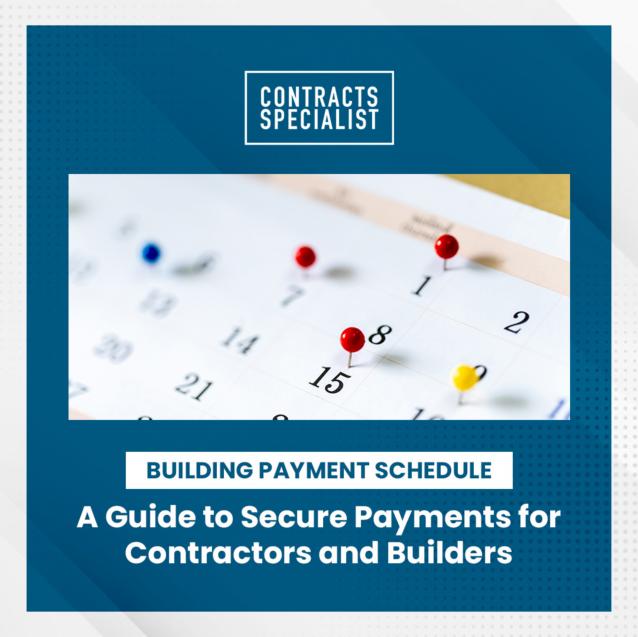
Extending Contract Time
By Contracts Specialist|June 21, 2022
Delays happen. Sometimes, there’s no way to avoid it. There are many factors that can cause a delay in construction - like bad weather or an equipment failure. If the contractor isn't at fault for your Extension of Time (EOT) application, then they'll most likely give you more time on top of what has already been planned.
EOT is a formal request for an additional period that can make up for delay losses. This is permitted by law for numerous valid reasons, and depending on your contract’s clause about the matter.
Reasonable Grounds for Extension of Time
Some of the acceptable reasons to request an extension of time would be:
Ongoing legal disputes;
The time clauses can refer to either the whole duration or in different milestones in the project.
But then, there are different types of contracts and they can have different time clauses. The common types of contracts are:
Lump Sum Contract
This type of contract is one where the price for work to be done has already been set at an agreed-upon value before any materials or service providers are involved.
Cost Plus Contract
This contract allows for unforeseeable expenses to be reimbursed alongside an additional profit margin at the end.
Small Jobs Contract
These are contracts typically for jobs with prices that range from $5,000 to $20,000. These can be paid as per milestones (progress payments) or in full.
Large Jobs Contract
These are home building contracts that cost above $20,000. These contracts require you to have insurance, an understanding of the Consumer Building Guide, and a clause dedicated for dealing with contract variations.
Who can Request an Extension of Time?
Filing an Extension of Time (EOT) with your head contractor can be a great way to avoid last-minute rush jobs. You must first submit it through their office, but once approved you'll have more than enough space for whatever project needs arises.
If your reason is valid, you can proceed with claiming the extended time period to make up for delays.
How to Request for an Extension of Time
When you need an extension of time, start by writing a letter enclosed with supporting documents. There are plenty of templates that can help get this done nicely! The important thing is to make sure your request includes all required documentation.
Your letter must contain the number of additional days you would need to complete work. It must include the details of the delay such as:
Include Logo
If applicable, include the logo of your construction business on either the upper left or upper right corner of your letter.
Include Recipient Information
Just like a normal letter, sign your request for extension of time by providing your company or business name, registered business address, and contact information.
Helping you with Construction Contracts
Contracts Specialist can help you communicate sudden changes or variations in your construction contract. Whether it is informing your head contractor of time or cost changes, or simply seeking legal advice, you can rely on Contract Specialist to help you.
We can help you understand and get through the legal process needed to enforce your rights properly. We can also provide assistance on how to construct your Extension of Time Request Letter properly.
We will guide you on the right process so that you will be given extra time to work on your project without going through a contract dispute.
Schedule a consultation now and enforce your rights. Your first consult is FREE.
EOT is a formal request for an additional period that can make up for delay losses. This is permitted by law for numerous valid reasons, and depending on your contract’s clause about the matter.
Reasonable Grounds for Extension of Time
Some of the acceptable reasons to request an extension of time would be:
Ongoing legal disputes;
- Delays in the delivery of important goods;
- The client has personally asked you to start work at a later time;
- The client has requested variations in your scope of work;
- You have been working in unexpectedly bad weather conditions and;
- Other reasons deemed reasonable by the builder or head contractor.
The time clauses can refer to either the whole duration or in different milestones in the project.
But then, there are different types of contracts and they can have different time clauses. The common types of contracts are:
Lump Sum Contract
This type of contract is one where the price for work to be done has already been set at an agreed-upon value before any materials or service providers are involved.
Cost Plus Contract
This contract allows for unforeseeable expenses to be reimbursed alongside an additional profit margin at the end.
Small Jobs Contract
These are contracts typically for jobs with prices that range from $5,000 to $20,000. These can be paid as per milestones (progress payments) or in full.
Large Jobs Contract
These are home building contracts that cost above $20,000. These contracts require you to have insurance, an understanding of the Consumer Building Guide, and a clause dedicated for dealing with contract variations.
Who can Request an Extension of Time?
Filing an Extension of Time (EOT) with your head contractor can be a great way to avoid last-minute rush jobs. You must first submit it through their office, but once approved you'll have more than enough space for whatever project needs arises.
If your reason is valid, you can proceed with claiming the extended time period to make up for delays.
How to Request for an Extension of Time
When you need an extension of time, start by writing a letter enclosed with supporting documents. There are plenty of templates that can help get this done nicely! The important thing is to make sure your request includes all required documentation.
Your letter must contain the number of additional days you would need to complete work. It must include the details of the delay such as:
- Time or period when the delay happened;
- Copy of notice where you previously informed the head contractor or client of a possible delay;
- Material or cost changes due to the delay;
- Events that led to the delay;
- Events or works affected by the delay;
- Measures you did to prevent the delay and;
- Alternative solutions to make up for the delay.
- Don’t forget to attach the respective documents that can support your reasons to extend your time and continue work, particularly the documents required according to your contract.
- Make sure you take note of the period of time when you can request for an extension of time. Some contracts provide for time limits upon when the EOT requests can be made.
- The client and the project manager have the final say whether to accept your request or not.
Include Logo
If applicable, include the logo of your construction business on either the upper left or upper right corner of your letter.
Include Recipient Information
- On the upper left side of the page, put the following information:
- construction’s business name,
- registered business address,
- client’s or project manager’s name, and
- business email address.
- You might also want to include the date the letter was made on the left side of the page.
- You may address the recipient by their surname or by using “Dear Sir / Madam.”
- Give a summary or heading of what is the basis of your request for extension of time. You can put a reference after the greeting.
- You may refer to the clause of the Contract that addresses service and preparation of extension of time requests.
- Make a table to accurately explain the details of the delay and why you need an extension of time.
- The chart should contain the date of when the delay happened, description of event and/or delay, events or works affected by the delay, and the number of days you need.
- You may also include and explain the material or costs changes due to the delay. Describe the changes and calculate the overall total costs incurred or to be incurred.
- Add supplemental information that may support or persuade your client to give you an extension of time.
Just like a normal letter, sign your request for extension of time by providing your company or business name, registered business address, and contact information.
Helping you with Construction Contracts
Contracts Specialist can help you communicate sudden changes or variations in your construction contract. Whether it is informing your head contractor of time or cost changes, or simply seeking legal advice, you can rely on Contract Specialist to help you.
We can help you understand and get through the legal process needed to enforce your rights properly. We can also provide assistance on how to construct your Extension of Time Request Letter properly.
We will guide you on the right process so that you will be given extra time to work on your project without going through a contract dispute.
Schedule a consultation now and enforce your rights. Your first consult is FREE.



